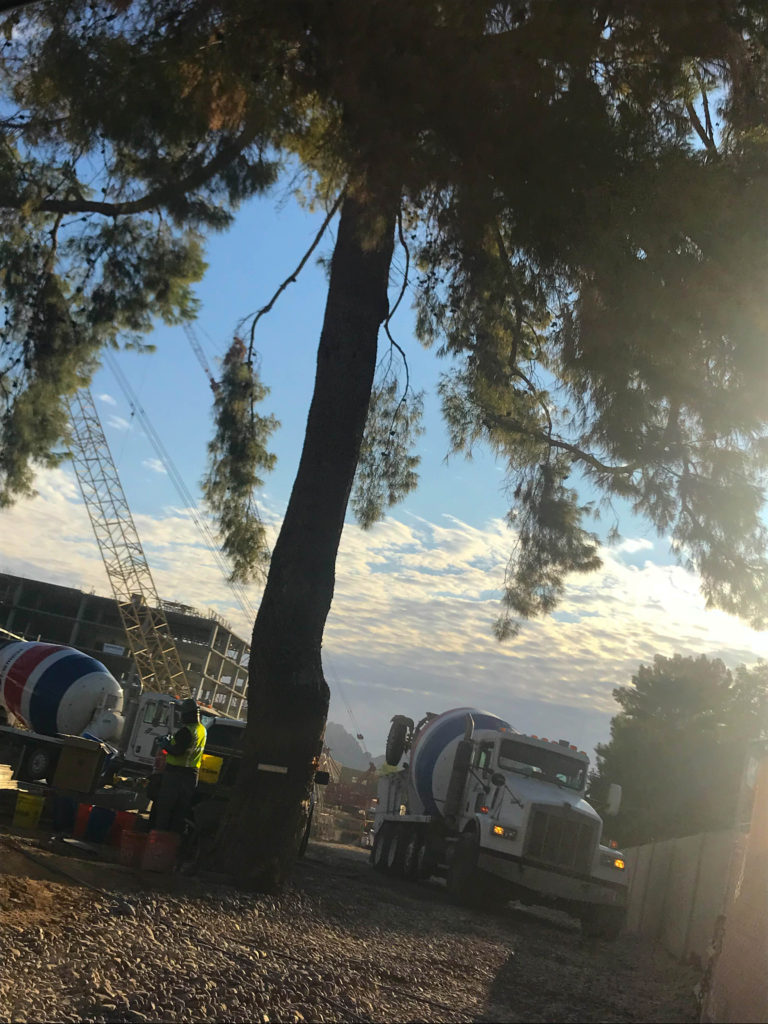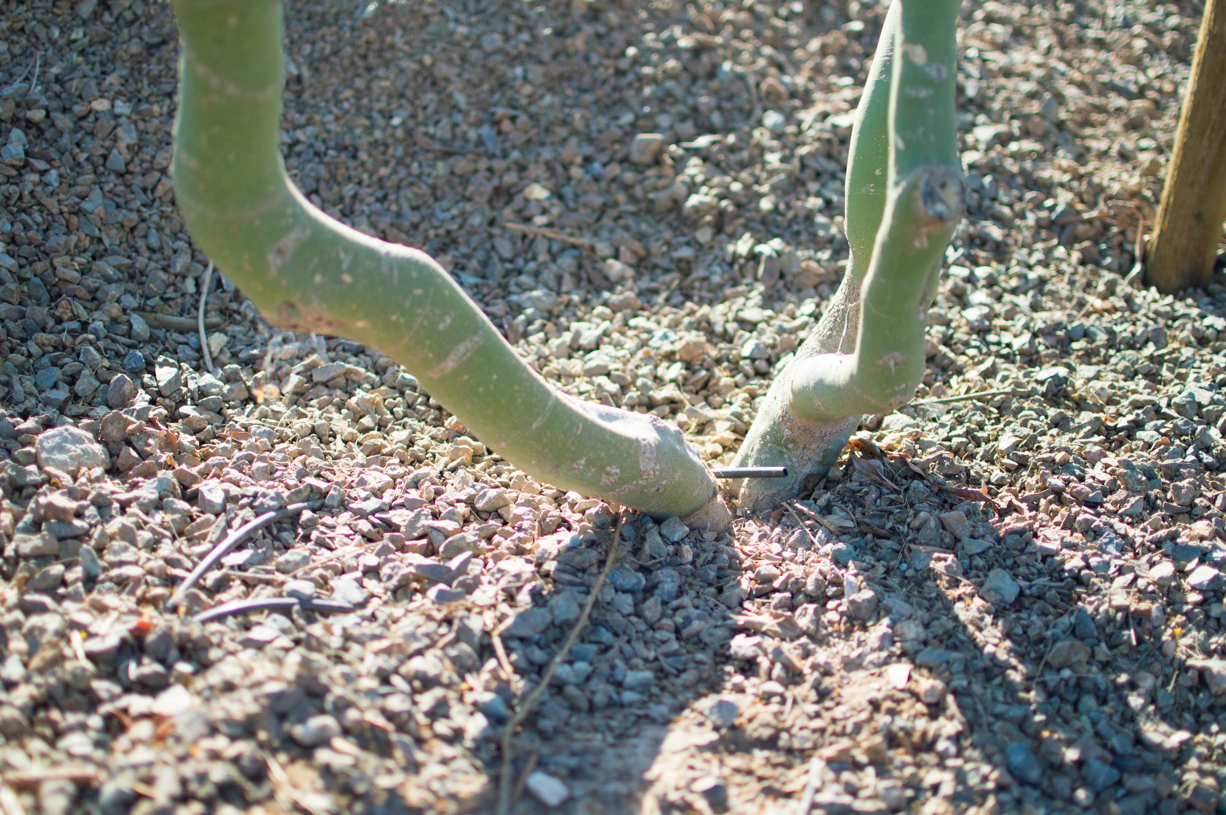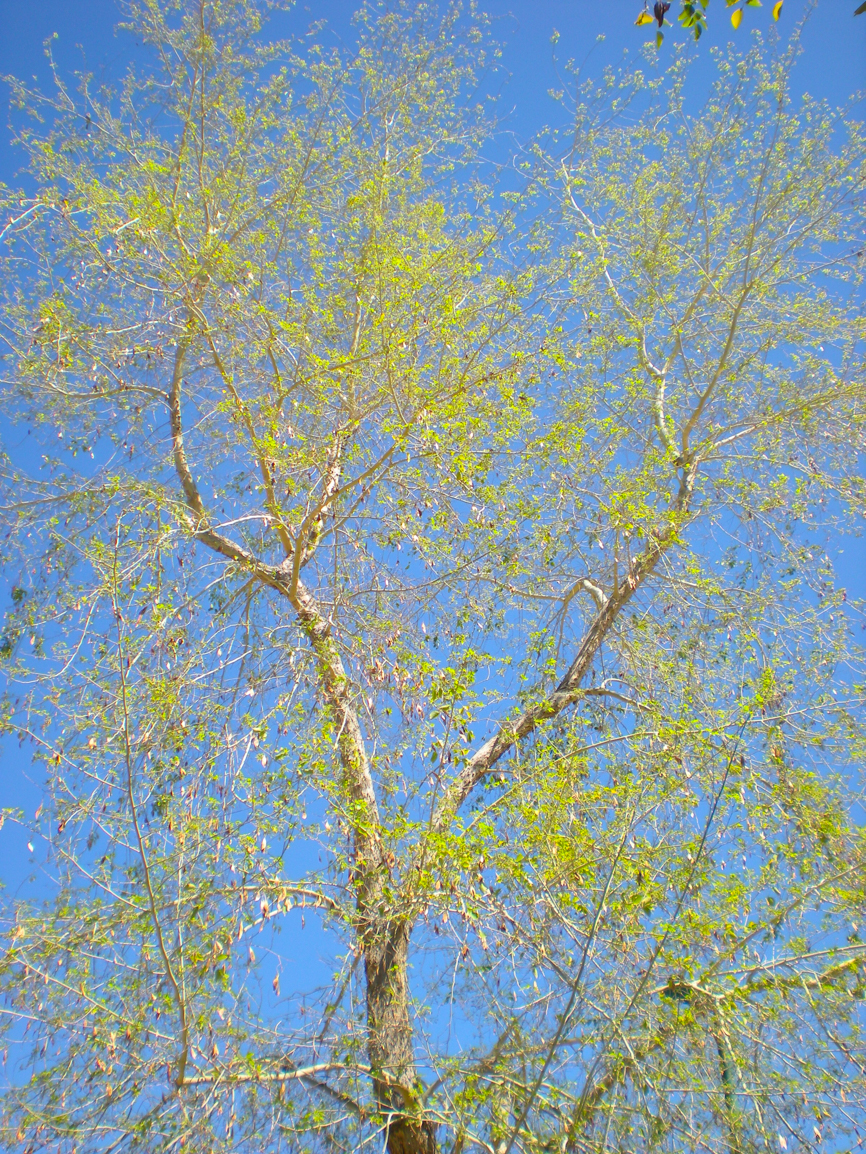A few weeks ago, I had the privilege of speaking at the Arizona Community Tree Council’s annual conference in Prescott Arizona. This two-day event is a great way for Certified Arborist and tree care professionals to earn continuing education credits and also a get a chance to mingle with industry peers. This year, I taught part two of my class series, Tree Disorders of the Desert Southwest which focused on abiotic-caused disorders in trees. Last year’s class focused on biotic diseases, or biologically-caused plant problems. One of the topics covered this year was damage trees encounter during construction. Since we are seeing a surge in our construction industries (yeah economy!) it is a good opportunity to remind our construction managers, crews and property owners that existing trees need a little TLC and protection before, during and after improvement projects.


My eyes naturally gravitate towards trees as I drive the streets of the valley, and when i see a fenced in construction site with trees growing inside the protected zone, I am often disappointed to find the trees are a forgotten relic of the property. Vehicles parked under the canopy, tree trunks being used to as a backboard to hang signs, or a great shady spot for the concrete or painting crews to wash out their equipment. All of these can impact tree’s growing environment and therefore affect their health. Unfortunately, this type of abuse can cause extensive damage to established trees both above ground and below. Heavy equipment and repeated foot traffic over the root zone can compact soil, reducing the air and moisture space, which leads to root die back. Physical damage to roots from trenching and changes in soil grade can also impact not only the tree’s health but its structural integrity. Severing a root at least 4” in diameter within 10’ of the trunk can create a risky situation and a liability issue if it was a significant anchoring root. Construction chemicals deposited in the soil can also change the soil chemistry, which can be very challenging to remediate.
If you are planning on a construction project on your property and would like to salvage existing trees, here are a few steps to help to preserve and protect:
- Hire a Certified Arborist to develop a tree protection plan.
- Initiate a protection plan months in advance in order to help address irrigation changes which need to be made prior to the construction.
- Barricade off area to protect the ‘critical root zone’ or the area where root damage can significantly impact the trees’ health. Do not allow access to this area by any construction crews.
- Hang signs on the protected zone informing workers why this area is barricaded, and consider enforcing fines if restrictions are not followed.
- Establish an alternative irrigation plan if water will be off to the property for a period of time. This is especially important during the summer months when even a few days of a water outage could negatively impact the tree.
- Do not trim or remove foliage before or during the project. Think of every piece of green on that tree as a little food factory, making food to support the life of the tree. We want to keep all factories in full production during the project to support good health.
- Fertilizer can be considered if the tree is not in good health going into the project. Ask your tree health care professional about organic acids or humic acids, which can help improve the below-ground growing conditions.
- If trenching or digging is required within the critical root zone, hire a tree care company to ‘air trench’ instead of digging, then lay pipes over, under or around the existing root system. Remember severing roots can not only impact the tree’s health but can also cause structural instability.

If you have finished your project and now are seeing branch dieback, wilting or early fall leaf drop, you may want to have a tree care professional perform a root collar excavation or air spade the soil around the trees to investigate the damage that was done to the tree. Depending on tree species, some may bounce back a year or so after the project. Unfortunately, other species are not so forgiving once their roots are disturbed or damaged. The first step in recovery will be determining if the tree is at risk of failing due to major root damage. The second step will be to make the root system as happy as you can by addressing any compaction issues, fertility issues and also ensuring the tree is receiving adequate water for its age and size.
If you are planning a project and would like to protect existing trees on your property, please contact me and we can discuss how I can help develop a protection plan. Remember, some trees don’t show damage for many years after a project is completed, making it difficult to connect the dots between damage and current tree decline. Prevention is the best way to protect your trees, but sometimes giving your trees a little extra attention and care can help with heal back to a healthy state.



